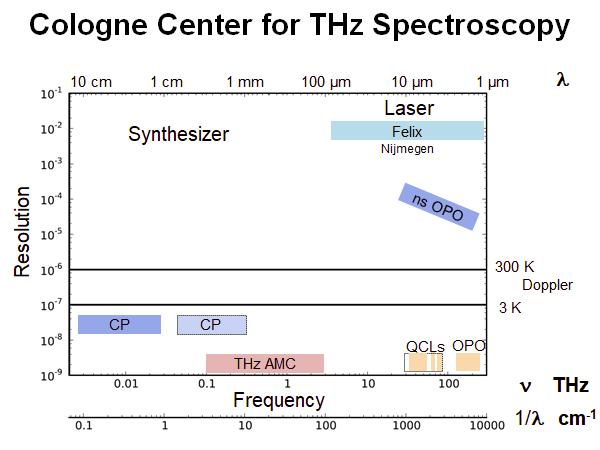Prof. Dr. Stephan Schlemmer, Invited Lecture, 27th International Conference on High Resolution Molecular Spectroscopy, Bologna, Italy:
Action spectroscopy in cryogenic higher-order multipole ion traps as depicted in the insert of the Figure below was instrumental to overcome limitations of traditional ways of ion spectroscopy. Mass selection paired with low tempera-
ture storage and near unity ion detection efficiency are unique features of these techniques (McGuire et al., 2020). Today narrow band infrared lasers are commercially available and allow to record rotationally resolved vibrational spectra (see Fig.). In our newly developed leak-out spectroscopy (LOS) method the ions of interest are kicked-out from the trap based on a vibration-to-translation energy transfer (Schmid et al., 2022). We use the highly accurate THz radiation from amplifier multiplier chains (THz AMC, see Fig.) to employ THz-infrared double resonance schemes in order to also record pure rotational transitions (Asvany and Schlemmer 2021). Based on these spectra several ionic species have been found in space, e.g., (Silva et al., 2023). Moreover, LOS is a spectroscopic tool to analyse the composition of an isobaric ion cloud. We use this possibility to determine the ortho to para ratio of H3+ and other ions but also to prepare clean isomeric samples. Therefore, new classes of experiments can be performed under the controlled trap conditions.

